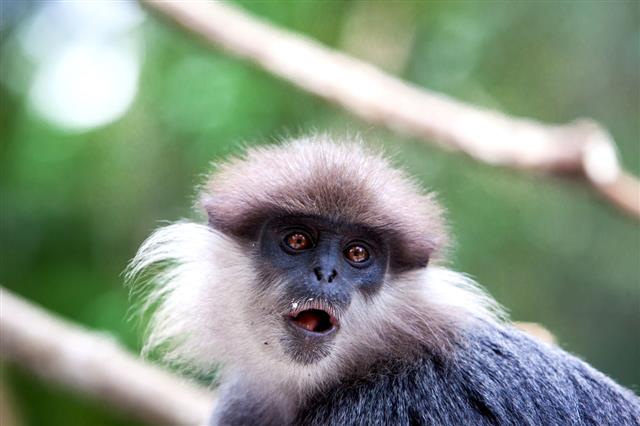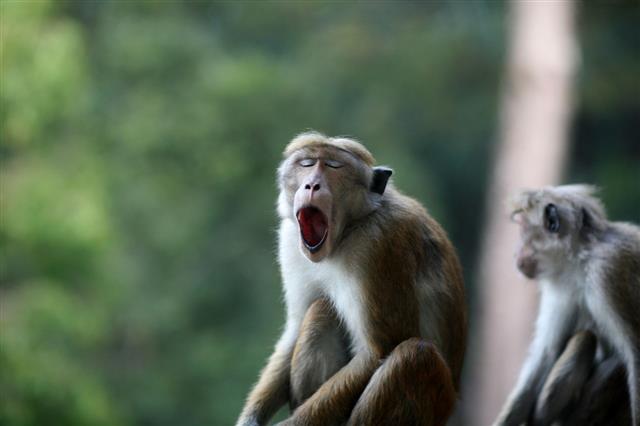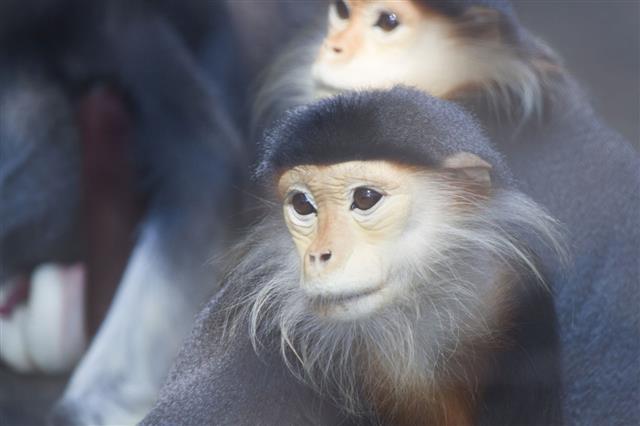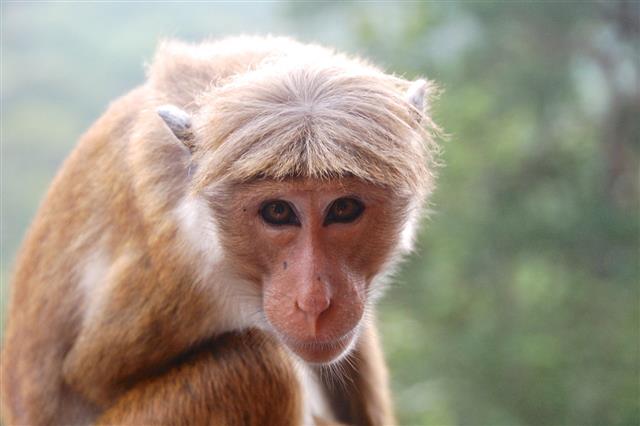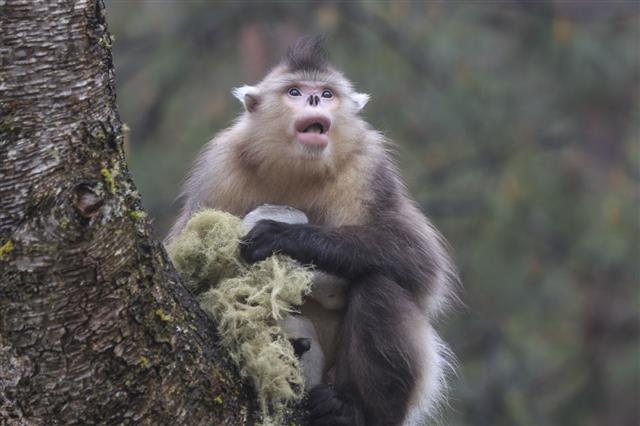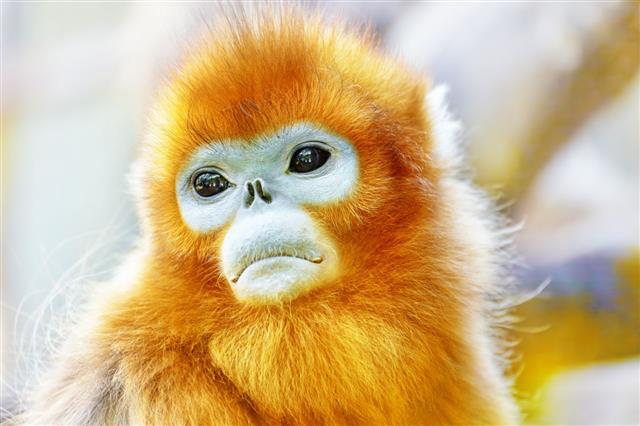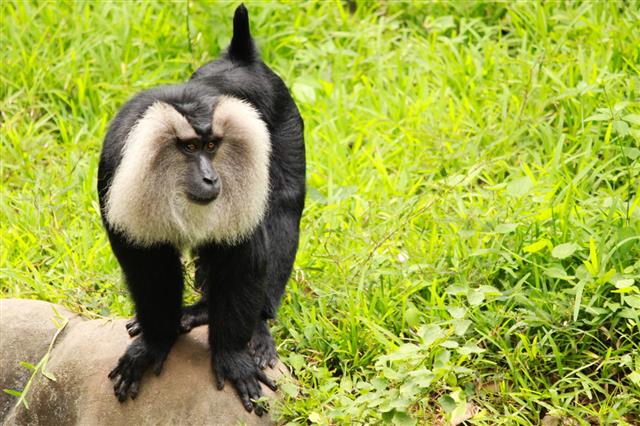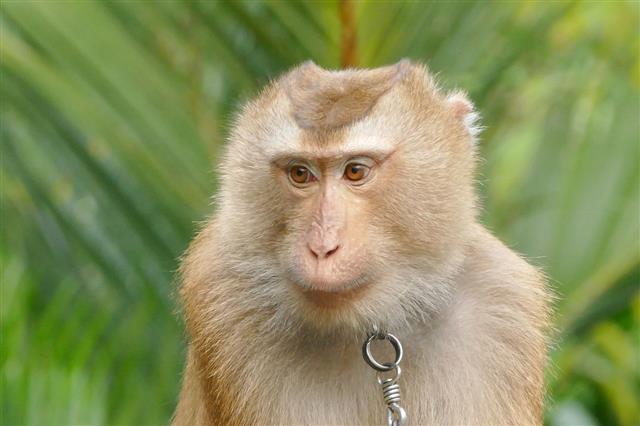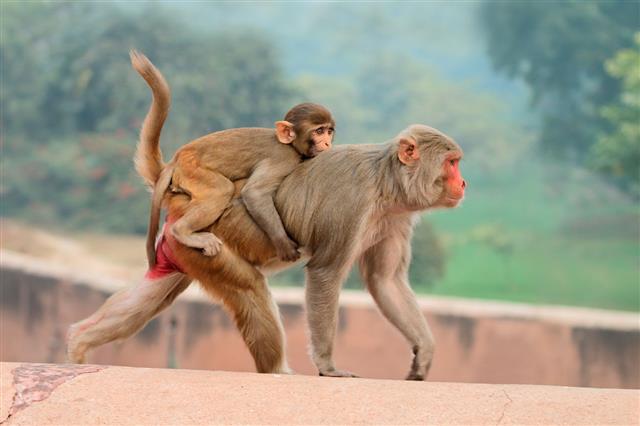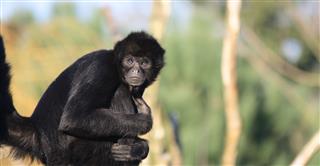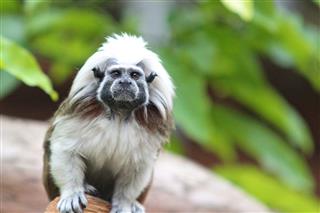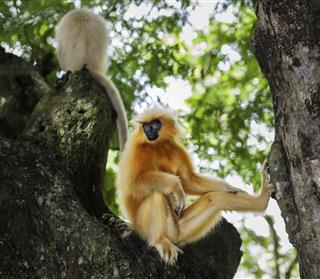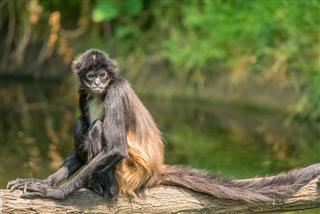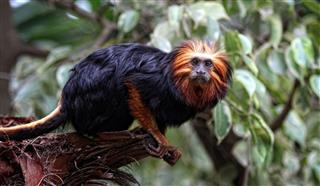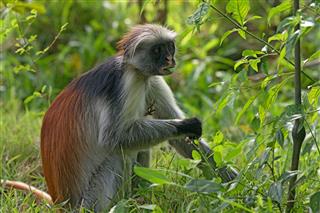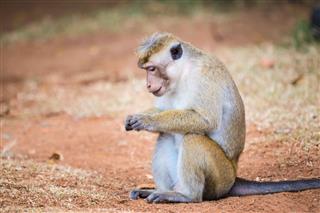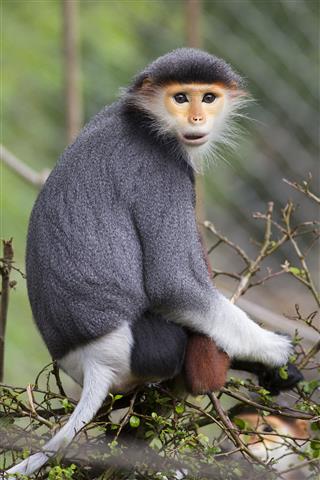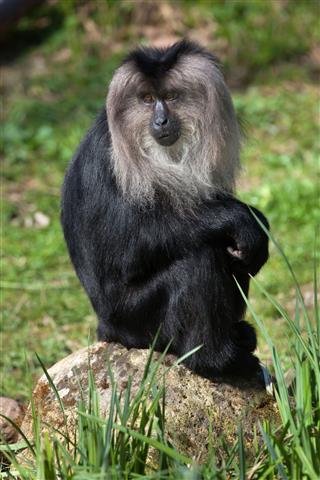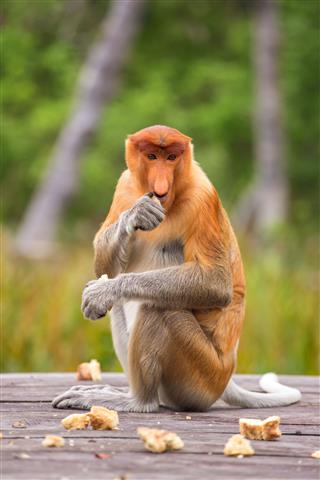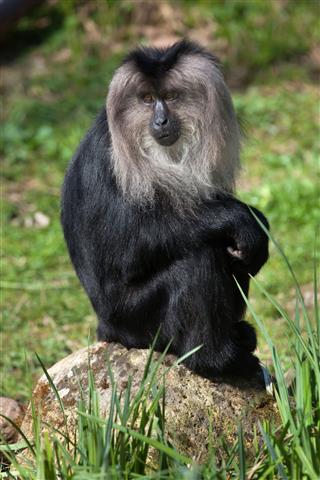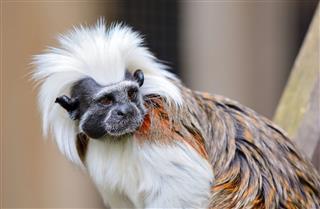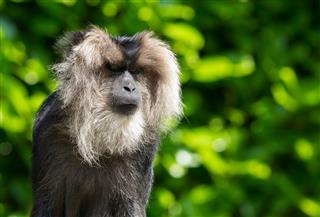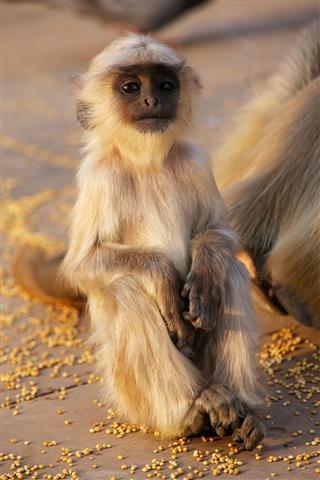
We seldom think about monkeys when we talk about endangered animals, but one look at this list of endangered monkeys and you will be surprised to see the number of species that are fighting for their very existence on the planet.
A ‘Critical’ Situation
Of the 80 monkey species that are considered endangered, 28 are enlisted as critically endangered, meaning they face a very high risk of extinction in the wild.
As many as 80 species of monkeys are threatened by extinction as of today, and yet, these primates fail to make it to the headlines like tigers or rhinos. To some extent, this can be attributed to the fact that there are numerous species (and subspecies) of monkeys. In fact, most people may not even be aware of the existence of some of these monkey species.
There are approximately 260 known species of monkeys in the world, which are classified into two groups: (i) New World monkeys, found in Central and South America and parts of Mexico, and (ii) Old World monkeys, found in Africa and Asia. While some species are found in abundance in their natural habitat, some are more often seen in the list of critically endangered and endangered species compiled by the International Union for Conservation of Nature (IUCN).
IUCN Classification
On the basis of the relative risk of extinction, the IUCN classifies threatened species into different categories.
- Critically endangered species (CR): Extremely high risk of extinction in the wild
- Endangered species (EN): Very high risk of extinction in the wild
- Vulnerable (VU): High risk of extinction in the wild*
*The species enlisted as vulnerable are the ones that are likely to become endangered.
List of Endangered Monkeys


CR: Critically Endangered
EN: Endangered
| Species | Scientific Name | Range | Status |
| Arunachal Macaque | Macaca munzala | Arunachal Pradesh, India |
EN
|
| Barbara Brown’s Titi | Callicebus barbarabrownae | Caatinga, Brazil |
CR
|
| Barbary Macaque | Macaca sylvanus | Algeria, Morocco, and Gibraltar |
EN
|
| Black Bearded Saki | Chiropotes satanas | Brazilian Amazon |
CR
|
| Black Lion Tamarin | Leontopithecus chrysopygus | São Paulo, Brazil |
EN
|
| Black Snub-nosed Monkey | Rhinopithecus bieti | China |
EN
|
| Black-headed Spider Monkey | Ateles fusciceps | Colombia, Nicaragua, and Panama |
CR
|
| Black-shanked Douc | Pygathrix nigripes | Vietnam and Cambodia |
EN
|
| Blond Capuchin | Cebus flavius | Northeastern Brazil |
CR
|
| Brown Spider Monkey | Ateles hybridus | Colombia and Venezuela |
CR
|
| Buffy-headed Marmoset | Callithrix flaviceps | South-eastern Brazil |
EN
|
| Caquetá Titi | Callicebus caquetensis | Colombia |
CR
|
| Celebes Crested Macaque | Macaca nigra | Sulawesi (Celebes), Indonesia |
CR
|
| Coimbra Filho’s Titi | Callicebus coimbrai | Bahia and Sergipe, Brazil |
EN
|
| Colombian Woolly Monkey | Lagothrix lugens | Colombia and Venezuela |
CR
|
| Cotton-top Tamarin | Saguinus oedipus | Northwestern Colombia |
CR
|
| Delacour’s Langur | Trachypithecus delacouri | Vietnam |
CR
|
| Drill | Mandrillus leucophaeus | Nigeria, Cameroon, and Equatorial Guinea |
EN
|
| Dryas Monkey | Cercopithecus dryas | Congo Basin |
CR
|
| François’ Langur | Trachypithecus francoisi | Southwestern China to northeastern Vietnam |
EN
|
| Gee’s Golden Langur | Trachypithecus geei | India (i.e., the state of Assam) and Bhutan |
EN
|
| Geoffroy’s Spider Monkey | Ateles geoffroyi | Central America and Mexico |
EN
|
| Golden Lion Tamarin | Leontopithecus rosalia | Brazil |
EN
|
| Golden Monkey | Cercopithecus kandti | Central Africa, Uganda, Rwanda, and DR Congo |
EN
|
| Golden Snub-nosed Monkey | Rhinopithecus roxellana | Central and Southwest China |
EN
|
| Golden-bellied Capuchin | Cebus xanthosternos | Bolivia, Brazil, and Colombia |
CR
|
| Golden-headed Lion Tamarin | Leontopithecus chrysomelas | Brazil |
EN
|
| Gray Snub-nosed Monkey | Rhinopithecus brelichi | China |
EN
|
| Gray Woolly Monkey | Lagothrix cana | Bolivia, Brazil, and Peru |
EN
|
| Gray-shanked Douc | Pygathrix cinerea | Vietnam |
CR
|
| Guatemalan Black Howler | Alouatta pigra | Belize, Guatemala, and Mexico |
EN
|
| Hatinh Langur | Trachypithecus hatinhensis | Vietnam |
EN
|
| Indochinese Lutung | Trachypithecus germaini | Thailand, Burma, Cambodia, and Vietnam |
EN
|
| Javan Surili | Presbytis comata | Western Java and Indonesia |
EN
|
| Kaapori Capuchin | Cebus kaapori | Brazil |
CR
|
| Kashmir Gray Langur | Semnopithecus ajax | Northern India and Nepal |
EN
|
| Kipunji | Rungwecebus kipunji | Tanzania |
CR
|
| Lion-tailed Macaque | Macaca silenus | Western Ghats in southern India |
EN
|
| Maranhão Red-Handed Howler | Alouatta ululata | Ceará, Maranhão, and Piauí in Brazil |
EN
|
| Mentawai Langur | Presbytis potenziani | Mentawai Islands, Indonesia |
EN
|
| Moor Macaque | Macaca maura | Sulawesi, Indonesia |
EN
|
| Myanmar Snub-nosed Monkey | Rhinopithecus strykeri | Burma (Myanmar) |
CR
|
| Niger Delta Red Colobus | Procolobus epieni | Niger Delta |
CR
|
| Northern Muriqui | Brachyteles hypoxanthus | Brazil |
CR
|
| Ollala Brothers’ Titi | Callicebus olallae | Bolivia |
EN
|
| Pagai Island Macaque | Macaca pagensis | Mentawai Islands, Indonesia |
CR
|
| Pennant’s Colobus | Procolobus pennantii | Equatorial Guinea, Nigeria, and the Republic of the Congo |
CR
|
| Peruvian Spider Monkey | Ateles chamek | Peru, Brazil, and Bolivia |
EN
|
| Phayre’s Leaf Monkey | Trachypithecus phayrei | Southeast Asia |
EN
|
| Pied Tamarin | Saguinus bicolor | Brazilian Amazon |
EN
|
| Pig-tailed Langur | Simias concolor | Mentawai Islands, Indonesia |
CR
|
| Preuss’s Monkey | Cercopithecus preussi | Nigeria, Cameroon, and Equatorial Guinea |
EN
|
| Preuss’s Red Colobus | Procolobus preussi | Cross-Sanaga River Ecoregion, West-central Africa |
CR
|
| Proboscis Monkey | Nasalis larvatus | Borneo, Southeast Asia |
EN
|
| Purple-faced Langur | Semnopithecus vetulus | Sri Lanka |
EN
|
| Red-shanked Douc | Pygathrix nemaeus | Vietnam and Laos |
EN
|
| Rio Beni Titi | Callicebus modestus | Bolivia |
EN
|
| Rio Mayo Titi | Callicebus oenanthe | Peru |
CR
|
| Roloway Monkey | Cercopithecus roloway | Côte d’Ivoire and Ghana |
EN
|
| Sanje Mangabey | Cercocebus sanjei | Tanzania |
EN
|
| Sarawak Surili | Presbytis chrysomelas | Borneo in Southeast Asia |
CR
|
| Shortridge’s Langur | Trachypithecus shortridgei | Burma and China |
EN
|
| Southern Muriqui | Brachyteles arachnoides | Brazil |
EN
|
| Sumatran Surili | Presbytis melalophos | Sumatra, Indonesia |
EN
|
| Superagui Lion Tamarin | Leontopithecus caissara | Southeastern Brazil |
CR
|
| Tana River Mangabey | Cercocebus galeritus | Southeastern Kenya |
EN
|
| Thollon’s Red Colobus | Procolobus tholloni | DR Congo and Republic of the Congo |
EN
|
| Tonkin Snub-nosed Monkey | Rhinopithecus avunculus | Northern Vietnam |
CR
|
| Toque Macaque | Macaca sinica | Sri Lanka |
EN
|
| Ugandan Red Colobus | Procolobus tephrosceles | Uganda and Tanzania |
EN
|
| Uta Hick’s Bearded Saki | Chiropotes utahickae | Brazil |
EN
|
| Uzungwa Red Colobus | Procolobus gordonorum | Tanzania |
EN
|
| Western Red Colobus | Procolobus badius | Western Africa |
EN
|
| White-cheeked Spider Monkey | Ateles marginatus | Brazil |
EN
|
| White-footed Tamarin | Saguinus leucopus | Colombia |
EN
|
| White-fronted Spider Monkey | Ateles belzebuth | Colombia, Ecuador, Venezuela, Peru, and Brazil |
EN
|
| White-headed Langur | Trachypithecus poliocephalus | Vietnam and China |
CR
|
| White-nosed Saki | Chiropotes albinasus | Brazilian Amazon |
EN
|
| Yellow-tailed Woolly Monkey | Oreonax flavicauda | Peru |
CR
|
| Zanzibar Red Colobus | Procolobus kirkii | Zanzibar Archipelago |
EN
|
Vulnerable Species
Like we said earlier, those species that are likely to become endangered are classified as vulnerable species. Sadly, the list of vulnerable monkeys is nearly as long as that of the endangered species. So, if proper conservation measures are not implemented at the earliest, the list of endangered species will become twice as long in the near future.
| Species | Scientific Name | Range |
| Aracá Uakari | Cacajao ayresii | Northwest Brazilian Amazon |
| Atlantic Titi | Callicebus personatus | Brazil |
| Bald Uakari | Cacajao calvus | Brazil and Peru |
| Bale Mountains Vervet | Chlorocebus djamdjamensis | Bale Mountains, Ethiopia |
| Black Colobus | Colobus satanas | Cameroon, Congo, Equatorial Guinea, and Gabon |
| Black Tamarin | Saguinus niger | Brazil |
| Black-footed Gray Langur | Semnopithecus hypoleucos | Southern India |
| Booted Macaque | Macaca ochreata | Sulawesi Island, Indonesia |
| Brown Woolly Monkey | Lagothrix lagotricha | Colombia, Ecuador, Peru and Brazil |
| Brumback’s Night Monkey | Aotus brumbacki | Colombia |
| Buffy-tufted Marmoset | Callithrix aurita | Southeast Brazil |
| Capped Langur | Trachypithecus pileatus | Bangladesh, Nepal, Bhutan, China, India, and Myanmar |
| Central American Squirrel Monkey | Saimiri oerstedii | Pacific coast of Costa Rica and Panama |
| Coastal Black-handed Titi | Callicebus melanochir | Brazil |
| Coiba Island Howler | Alouatta coibensis | Panama |
| Collared Mangabey | Cercocebus torquatus | Nigeria, Cameroon, Equatorial Guinea, and Gabon |
| Colombian Black-handed Titi | Callicebus medemi | Colombia |
| Diana Monkey | Cercopithecus diana | Sierra Leone to Ivory Coast in Africa |
| Goeldi’s Marmoset | Callimico goeldii | Amazon Basin (Bolivia, Brazil, Colombia, Ecuador, and Peru) |
| Gorontalo Macaque | Macaca nigrescens | Sulawesi Island, Indonesia |
| Gray-bellied Night Monkey | Aotus lemurinus | Colombia, Argentina, Ecuador, and Panama |
| Gray-handed Night Monkey | Aotus griseimembra | Colombia and Venezuela |
| Hamlyn’s Monkey | Cercopithecus hamlyni | Congo |
| Heck’s Macaque | Macaca hecki | Sulawesi, Indonesia |
| Hose’s Langur | Presbytis hosei | Borneo in Southeast Asia |
| Javan Lutung | Trachypithecus auratus | Java, Indonesia |
| King Colobus | Colobus polykomos | Ivory Coast, Guinea, Guinea-Bissau, Liberia, and Sierra Leone |
| L’Hoest’s Monkey | Cercopithecus lhoesti | Congo Basin |
| Laotian Langur | Trachypithecus laotum | Laos |
| Mandrill | Mandrillus sphinx | Cameroon, Gabon, Equatorial Guinea, and Congo |
| Natuna Island Surili | Presbytis natunae | Natuna Besar Island, Indonesia |
| Neblina Uakari | Cacajao hosomi | Amazon Rainforests of Brazil and Venezuela |
| Nilgiri Langur | Trachypithecus johnii | Nilgiri Hills, South India |
| Northern Pig-tailed Macaque | Macaca leonina | Bangladesh, Cambodia, China, India, Laos, Myanmar, Thailand, and Vietnam |
| Ornate Titi | Callicebus ornatus | Colombia |
| Peruvian Night Monkey | Aotus miconax | Peru |
| Red-eared Guenon | Cercopithecus erythrotis | Cameroon, Equatorial Guinea, and Nigeria |
| Red-faced Spider Monkey | Ateles paniscus | Brazil, Suriname, Guyana, and French Guiana |
| Red-handed Howler | Alouatta belzebul | Southeastern Amazon Rainforest, Brazil |
| Roosmalens’ Dwarf Marmoset | Callibella humilis | Amazon Rainforest, Brazil |
| Sclater’s Guenon | Cercopithecus sclateri | Southern Nigeria |
| Siberut Macaque | Macaca siberu | Siberut Island, Indonesia |
| Silvery Woolly Monkey | Lagothrix poeppigii | Brazil, Ecuador and Peru |
| Sooty Mangabey | Cercocebus atys | Burkina Faso, Ivory Coast, Ghana, Guinea, Guinea-Bissau, Liberia, Senegal, and Sierra Leone |
| Southern Pig-tailed Macaque | Macaca nemestrina | Malay Peninsula, Borneo, Sumatra, and Bangka Island (Southeast Asia) |
| Stump-tailed Macaque | Macaca arctoides | South Asia |
| Sun-tailed Monkey | Cercopithecus solatus | Gabon |
| Thomas’s Langur | Presbytis thomasi | North Sumatra, Indonesia |
| Tonkean Black Macaque | Macaca tonkeana | Sulawesi Island, Indonesia |
| Ursine Colobus | Colobus vellerosus | Benin, Ivory Coast, Ghana, Nigeria, Togo, and Burkina Faso |
| White Marmoset | Mico leucippe | Brazil |
| White-footed Saki | Pithecia albicans | Brazil |
| White-fronted Surili | Presbytis frontata | Indonesia, Malaysia, and Brunei |
| White-throated Guenon | Cercopithecus erythrogaster | Rainforests of Nigeria and Benin |
Why Are Monkeys Endangered?
Of late, environmentalists have noticed that the population of quite a few species is on a decline. What is more disturbing is the rate at which their number has been declining over the last decade or so. In most cases, the decline can be primarily attributed to the following factors.
Excessive Hunting
Several monkey species, including the Roloway and Pennant’s Red Colobus found in Africa, are excessively hunted for their meat. On the other hand, species like the Miss Waldron’s Red Colobus and Mt. Uarges Guereza―a subspecies of Mantled Guereza―are hunted extensively for their skin, which has a great demand in the international market.
Loss of Habitat
Human encroachment has resulted in destruction of habitat for several monkey species. Illegal logging, land clearance for agriculture, expanding human settlements, and other such factors are causing their natural habitat to deplete at an alarming rate. While habitat loss leaves them homeless and vulnerable, fragmentation of habitat makes it difficult for them to breed.
Other Factors
It may come as a surprise, but the practice of killing monkeys for the use of their various body parts in traditional medicine continues unabated even today. Also on rise is the practice of keeping them as pets. In a bid to capture these monkeys for pet trade, hunters use snares, which leave them injured―if not trapped, eventually resulting in their death.
Going by the rate at which this list is growing, it wouldn’t be long before we witness many more extinctions. If the aforementioned factors responsible for the decline in monkey population are not curbed soon, these species, which feature in the endangered monkeys list as of today, will soon be added to the list of the extinct animals, thus leaving the planet devoid of some of the most interesting members of kingdom Animalia.
